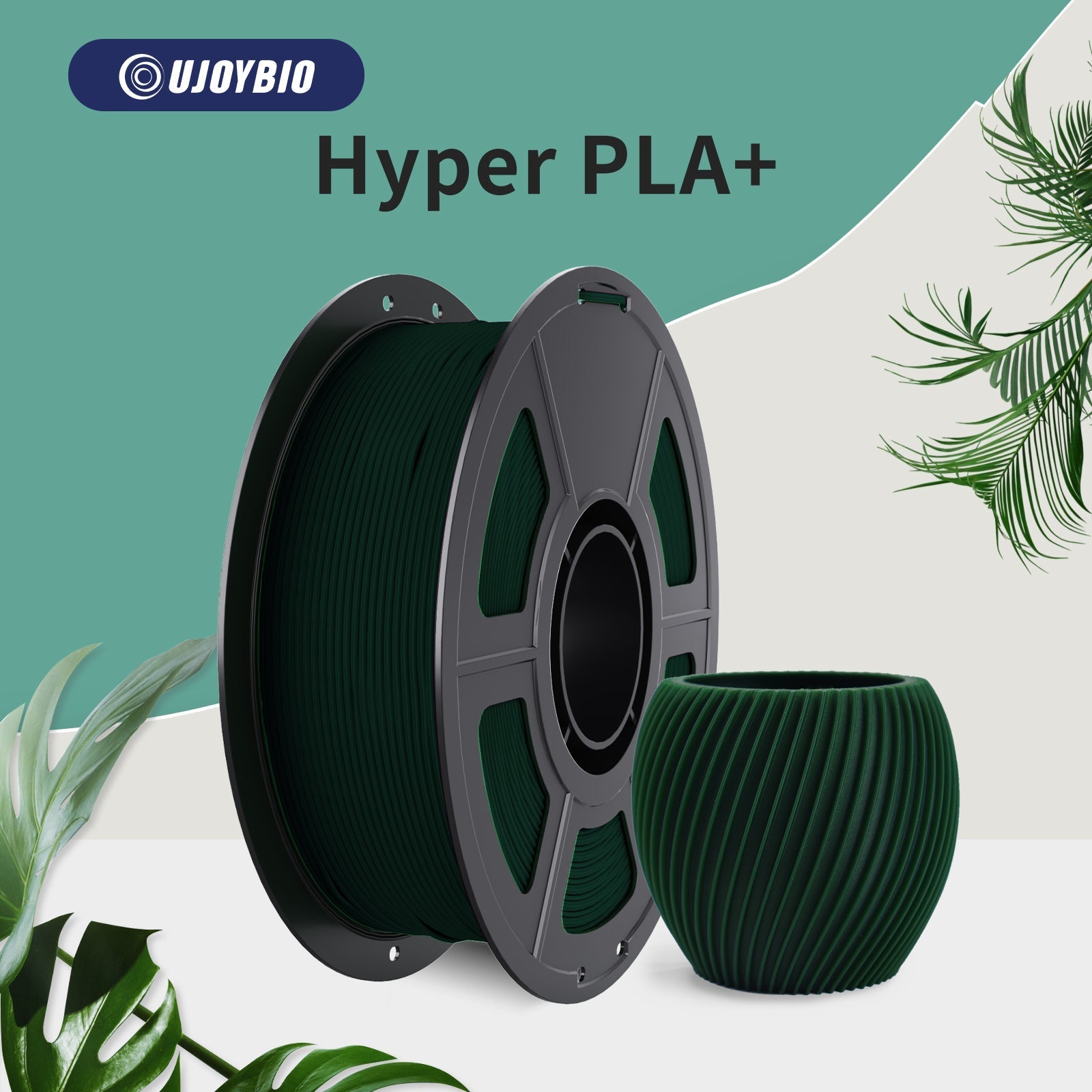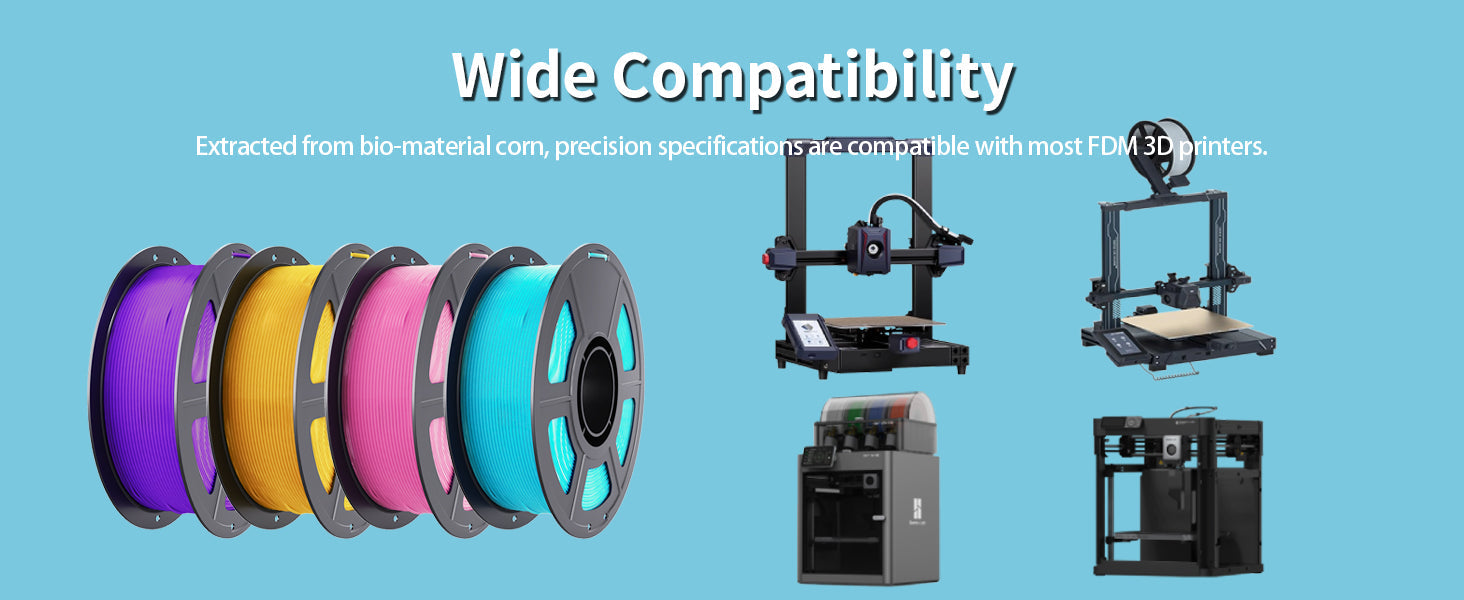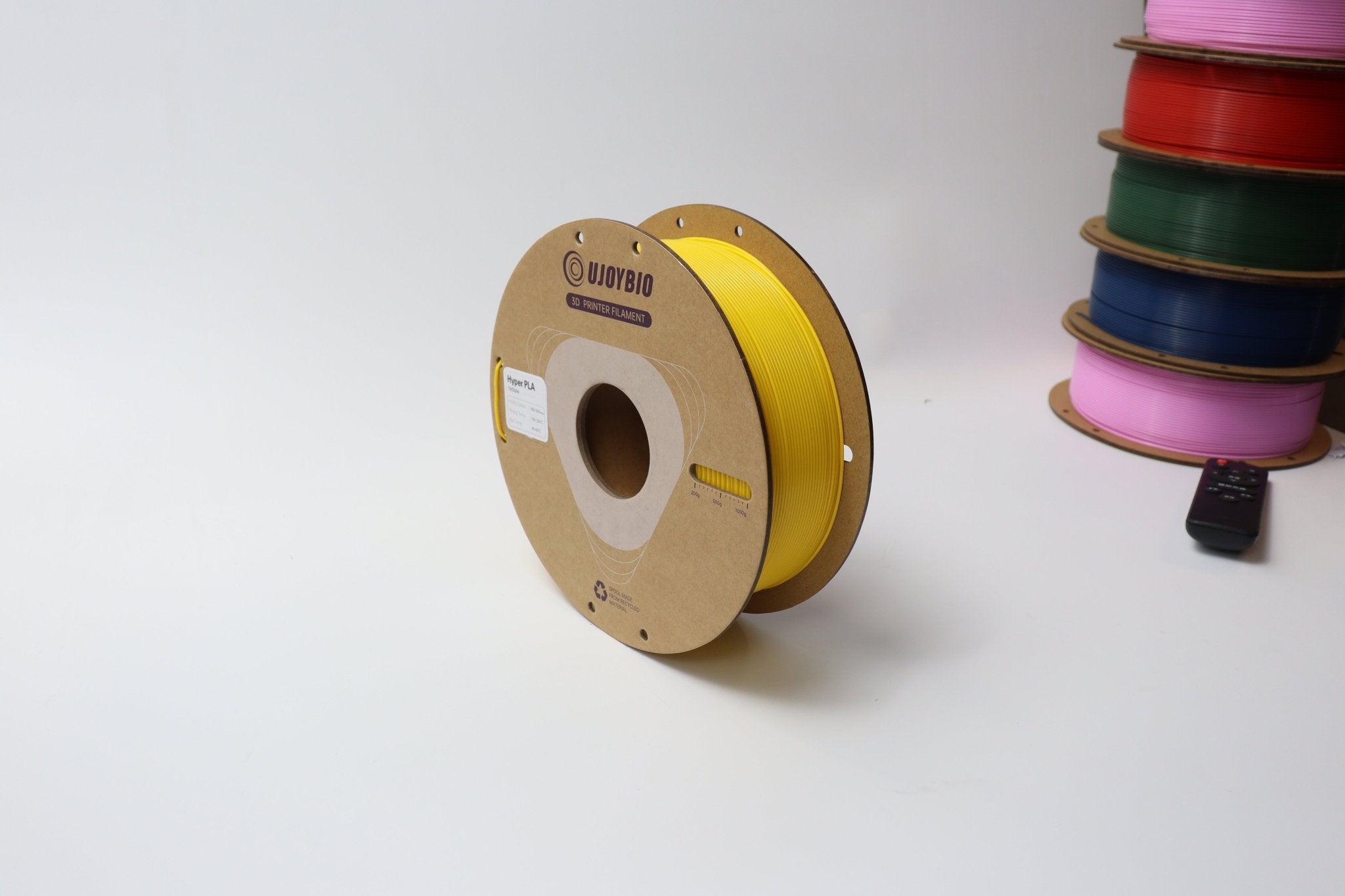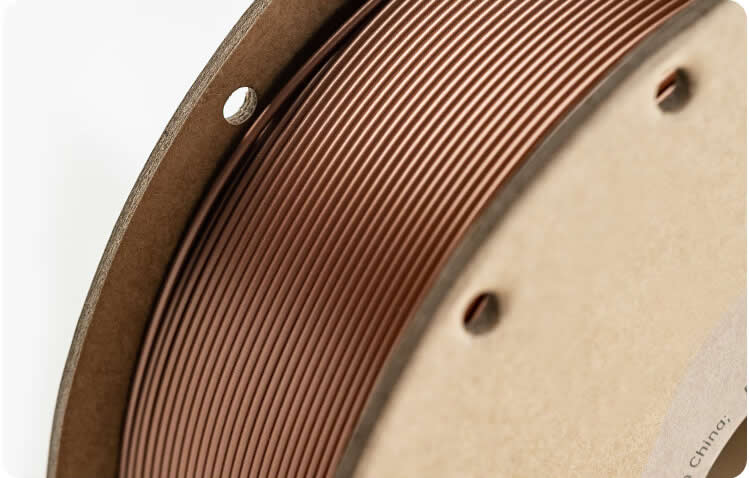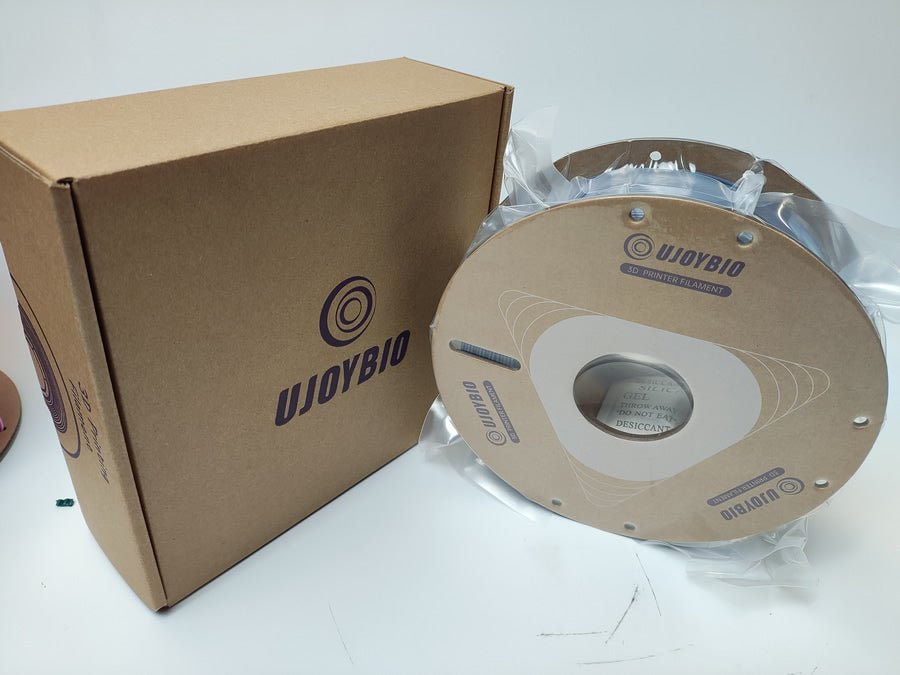
Outdoor placement and storage of 3D filament materials like PLA, ABS, TPU, PETG, etc.

UJOYBIO3D filament drying with sealing and desiccant
As 3D printing technology becomes more and more popular, the problems related to 3D printing are also attracting more and more attention. Now, UJOYBIO3D will give a detailed introduction to the common 3D printing filament materials, the problems of placing them outdoors, and how to store them well.
Comparison of the placement time of different types of filament materials
The sensitivity of different types of 3D printing filament materials to humidity varies from material to material, and the length of time that different materials are exposed to the air also varies. For example, common filament materials such as PLA, ABS, TPU, PETG, and so on, and the time they are placed in the outdoor air, we will show a comparison in the following table.
| Material | Moisture absorption | Time in air (approx.) | Effect of moisture absorption | Storage recommendations |
| PLA | Low to medium | Weeks to months | Deterioration of surface quality, possible air bubbles | Sealed bags, desiccant |
| TPU | High | A few days to a week | Air bubbles, layer bonding degradation | Seal bag + desiccant, dry box |
| TPE | High | Within a few days | Uneven extrusion, air bubbles, adhesion degradation | Same storage as TPU |
| ABS | Low to medium | Several weeks | Bubbles, loss of print strength | Sealed bags, dry if necessary |
| Nylon | Very high | Several hours to a day | Severe bubbling, warping, print performance degradation | Dry box, dry before printing |
| PC | High | Several hours to a day | Increased brittleness, reduced interlayer adhesion | Oven drying before printing |
As you can understand from the table above, there is a big difference in the moisture absorption of different types of filament materials when they are left in the air for different periods of time, so you can refer to it when placing filaments.
So in what kind of environment will these materials be affected?
The above time of placing the materials in the air affected by the environment is a rough estimate, and the actual situation may vary depending on the humidity of the environment.
Typically in high humidity environments (>50% RH) the rate of moisture absorption will be faster. In low humidity environments (<30% RH), the material will last longer.
The level of hygroscopicity indicates that the material's sensitivity to moisture varies, and usually ranges from low to medium, with slower hygroscopicity. From high or very high, it is extremely hygroscopic and requires special care in storage.
Storage recommendations for various types of filament materials
For highly hygroscopic materials, it is recommended to use a drying oven (with temperature control) and to dry them before printing.
For long-term storage, the use of a sealed bag/container is the minimum requirement, and the addition of a desiccant (e.g. silica gel) is preferred. For highly hygroscopic materials (e.g. Nylon, PC, TPU, etc.), dry box or vacuum storage is an option.
Before printing, if the material is suspected to have absorbed moisture, the material properties can be restored by heat drying (e.g., low-temperature baking in an oven or microwave). Drying temperatures and times for different materials can be found in the table below:
| Material | Drying temperature (℃) | Drying time |
| PLA | 40-50 | 3-4 hours |
| TPU | 40-50 | 4-6 hours |
| ABS | 60-70 | 2-4 hours |
| Nylon | 70-80 | 4-6 hours |
| PC | 70-80 | 4-6 hours |
Precautions and suggestions for various types of filament material placement
1. Dynamic changes in humidity
Don't just focus on the time the filament material is placed and ignore the effect of humidity on the rate of moisture absorption. When humidity is high, such as during the rainy season or summer months, the rate of moisture absorption accelerates significantly. When humidity is relatively low, such as during winter or in dry areas, filament materials can be stored for longer periods of time.
Recommendation:
The humidity of the storage environment can be monitored regularly to keep the humidity below 30% as well as sealed with a hygrometer or a moisture-proof box.
2. Effect of temperature
It is common to ignore the relationship between temperature and moisture absorption. Higher temperatures accelerate the rate of moisture absorption of the material, while higher temperatures may also lead to deformation or early aging of the material, for example, PLA is more sensitive to high temperatures.
Recommendation:
Filament materials should be stored in an environment that avoids high temperatures, with an ideal temperature of 15-25°C, and away from heat sources.
3. Effect of ultraviolet light
If filament materials are exposed to sunlight for a long time, UV rays will accelerate material aging, embrittlement and color fading, especially for PLA and ABS.
Recommendation:
Avoid exposing filament materials directly to sunlight or UV lamps, and should choose a light-sheltered environment for storage.
4. Unused for a long time
Filament materials that have been left unused for a long period of time and then used directly have the potential to absorb moisture. Materials that have not been used for a long period of time may have absorbed moisture, and direct use may affect print quality.
Recommendation:
Test the hygroscopicity of the filament material before printing, e.g. observe the surface of the filament material for frosting or roughness, and dry it if necessary.
5. Storage after printing
After printing, leave the filament material on the 3D printer overnight or even for several days, while the unprinted filament will quickly absorb moisture in a high humidity environment.
Recommendation:
After printing, try to move the filament material back into a sealed bag or dry box.
6. Cross-fertilization between different filament materials
Do not store a variety of filament materials together. Different materials have different moisture absorption and durability, and cross-storage may result in higher ambient humidity, accelerating the moisture absorption of certain materials.
Recommendation:
Separate storage of different filament materials, especially those with strong hygroscopicity, such as Nylon, TPU, etc., and those with weak hygroscopicity, such as PLA filament materials, the difference between the hygroscopicity of different materials is different, and putting them together will have a cross-influence.
7. Recycled waste after printing
In the printing failure of the material or cut down the waste material exposed to the air. Printed scrap absorbs moisture and reprocessing will affect its performance.
Recommendation:
Dry the scrap as much as possible before reuse, or store it properly for recycling.
8. Prolonged storage causes deterioration
When filament material is left in the air for a long period of time, even if it does not absorb moisture, the filament material may gradually deteriorate due to the oxygen in the air and undergo oxidation reactions. Aging filament materials may change in color, strength, and elasticity.
Suggestion:
You can periodically check the condition of stored filament materials and prioritize the use of old materials.
9. Periodic verification of printability
Assuming that the filament material is in good condition, performance tests can be reduced. The appearance of some filament materials may not change significantly after absorbing moisture, but the print performance has been affected.
Recommendation:
Test with a small amount of filament material, such as printing a small model, or a temperature tower, before printing to ensure proper performance.
10. Irreversible moisture absorption
Do not assume that filament drying will fully restore filament material performance. Some Nylon materials do not fully recover performance after severe moisture absorption, even after drying.
Recommendation:
Avoid hygroscopicity of filament materials to a severe stage, regular inspection and timely drying.

Dry UJOYBIO 3D Filament Prints Better
By adding the above precautions for placing filament materials in air, you can have a more comprehensive understanding of the precautions to be taken when storing 3D printing filament materials in air, avoiding common problems and prolonging the life of the materials while ensuring the stability of the print quality!
UJOYBIO3D's PLA+ filament materials are packed in sealed packages with built-in desiccant at the factory. You can seal the desiccant together again after use so that UJOYBIO3D's PLA+ materials can still bring you the same surprise when you use them next time.





